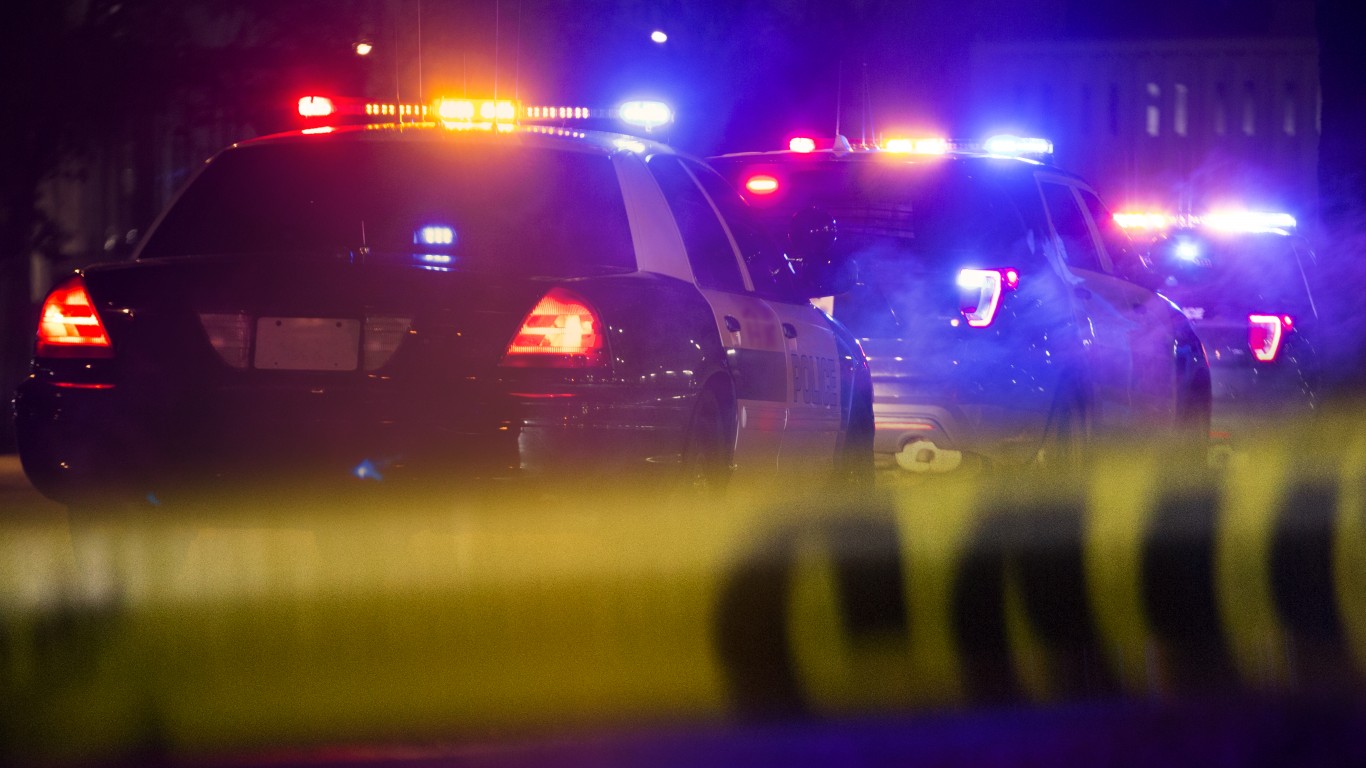

Cities across the United States have been reporting a spike in gun violence and homicide during the COVID-19 pandemic. In the first six months of 2020, there was a nearly 15% increase in murders nationwide, and across a sample of 59 cities tracked by the FBI, the number of murders was up 28% from January through July compared to the same period in 2019, according to The New York Times.
The increase reflects a sudden reversal of a longer-term trend, as violent crime has fallen in the U.S. for four consecutive years. There were 367 violent crimes reported for every 100,000 people in the United States in 2019, a low not seen since 2014 and a far cry from the highs of the early 1990s, when rates topped 750 violent crimes per 100,000 people annually.
Violent crime is a broad category of offenses comprising four sub categories: murder, robbery, rape, and aggravated assault. In Salt Lake City, Utah, violent crime is nearly twice as common as it is nationwide. In 2019, the most recent year of available data, there were a total of 1,442 violent crimes reported in the city — or 712 for every 100,000 people. Click here to see the full crime report for Salt Lake City.
The FBI tracked violent crime in 4,548 U.S. cities with populations of at least 5,000 in 2019, and 98% of those cities reported at least one violent crime that year. Of the 4,473 cities to report one or more incidents of violence, Salt Lake City ranks No. 370 by violent crime rate, which ranks it in the top 10% most violent U.S. cities.
Although violent crime is more common in Salt Lake City than it is nationwide, violent crime is less common in Utah than it is nationwide. There were a total of 7,553 violent crimes reported in Utah in 2019, or 236 for every 100,000 people. Of all 50 states, Utah has the 11th lowest violent crime rate.
The violent crime rate in Salt Lake City ranks as No. 3 of the 58 cities in Utah that are home to at least 5,000 people for which the FBI has data.
Across the United States, aggravated assault is the most common form of violent crime. Of the 1.2 million violent crimes committed in the U.S. in 2019, about 66% were incidents of aggravated assault. In Salt Lake City, aggravated assault accounted for 55% of all reported violent crimes in 2019.
Of the four types of violent crime, murder ranks the highest on the FBI’s hierarchy of crime severity. Salt Lake City, a city of about 202,400 residents, there were 13 murders committed in 2019, or 6 for every 100,000 people. The national murder rate stands at five incidents for every 100,000 people.
The relationship between economic distress and crime in a given area is not direct. However, lower-income areas often report higher than average crime rates. There are exceptions to this pattern however, and though the violent crime rate is considerably higher than the national average in Salt Lake City, the poverty rate is not. An estimated 10.3% of Salt Lake City residents live below the poverty line, compared to the 14.1% U.S. poverty rate.
Violent offenses are just one component of crime in an area. To provide a more comprehensive view of overall crime levels across the country, 24/7 Wall St. recently published extensive crime reports with data visualizations for over 4,000 cities and all 50 states. Click here to see the complete crime report for Salt Lake City here.
Take This Retirement Quiz To Get Matched With A Financial Advisor (Sponsored)
Take the quiz below to get matched with a financial advisor today.
Each advisor has been vetted by SmartAsset and is held to a fiduciary standard to act in your best interests.
Here’s how it works:
1. Answer SmartAsset advisor match quiz
2. Review your pre-screened matches at your leisure. Check out the
advisors’ profiles.
3. Speak with advisors at no cost to you. Have an introductory call on the phone or introduction in person and choose whom to work with in the future
Take the retirement quiz right here.
Thank you for reading! Have some feedback for us?
Contact the 24/7 Wall St. editorial team.